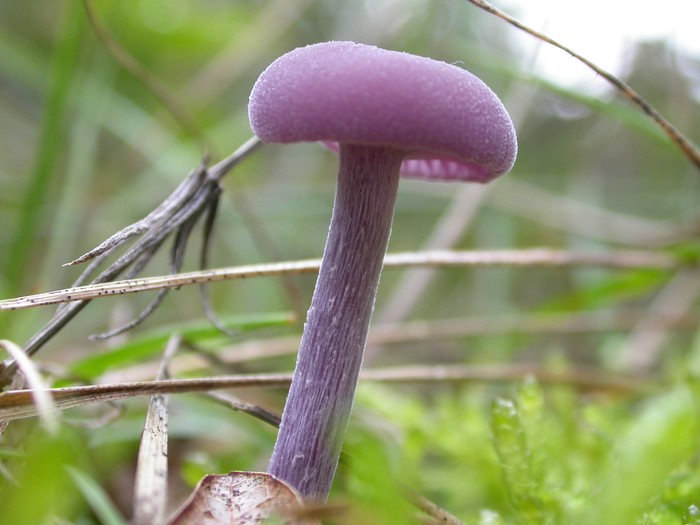
This little purple guy appears to be VERY common. This example was about 3cm (1 1/2 inches) tall, growing in the grass and moss next to a gravel trail. Update: The species has been identified as Laccaria amathystea.
The internet is a wonderful thing. Eric and I have joined several "meet people" sites around the 'net, and thus met Chris and Elke. They live in Den Haag -- that's The Hague for the Americans. Den Haag is a beautiful town in and of itself. It's got a couple of neat museums and a castle or two, but it was such a beautiful day that we decided to go walking in the forests North of Den Haag.

This little purple guy appears to be VERY common. This example was about 3cm (1 1/2 inches) tall, growing in the grass and moss next to a gravel trail. Update: The species has been identified as Laccaria amathystea.
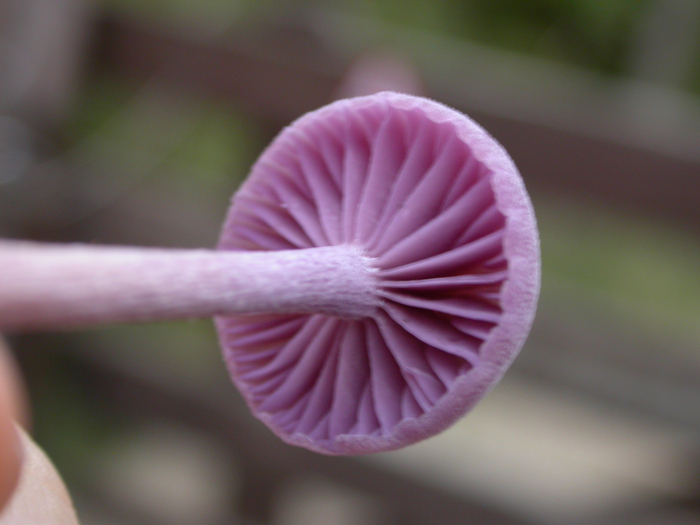
You can see that the gills are rather widely spaced. This would be typical of a Marasmius, but I have no idea if that's what this is. In fact, I think maybe Marasmius only have white gills. Oh well.
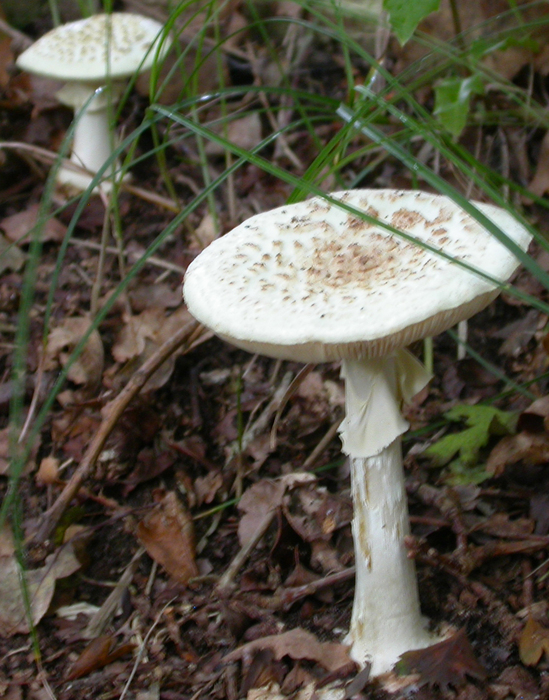
A pair of Amanitas. I do not have a good guess as to the species. It certainly could be one of the several white Amanitas called "Destroying Angels" - beautiful, meaty white mushrooms that will kill you very dead indeed if you eat them.
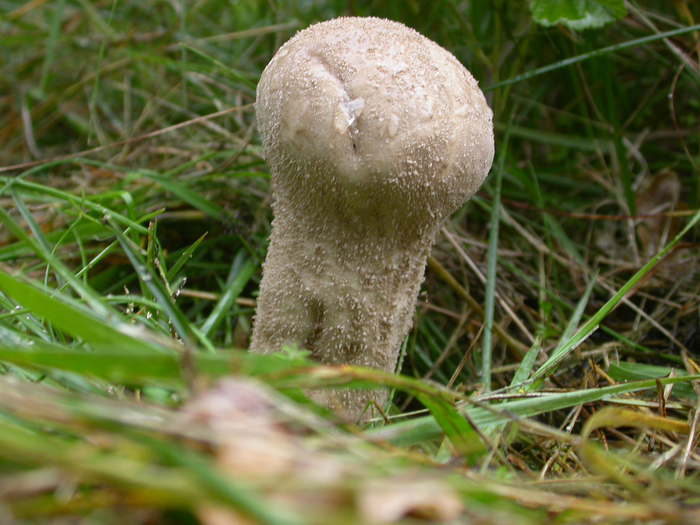
This is one of the stalked puffballs.
I don't know which one. Some of these are edible, some are not. Many species of puffball are edible when young - in other words, when their interior flesh is a pure fiberous white. At the first hint of yellow tinge, they start to develop a bitter taste. Within a few days the white flesh will dissolve into a greenish goo, which is actually a primordial soup of developing spores. As time passes the mushroom will dry out, and the goo will turn to dust. A hole will form in the top of the mushroom, and any passing breeze or boot will release a puff of spores through the hole. This is how the mushroom spreads its spores, and they're loads of fun to play with. Puffing
a puffball just helps it to spread its spores around, so this is one that, once it's in the puffing
stage, you can kick to your heart's content.
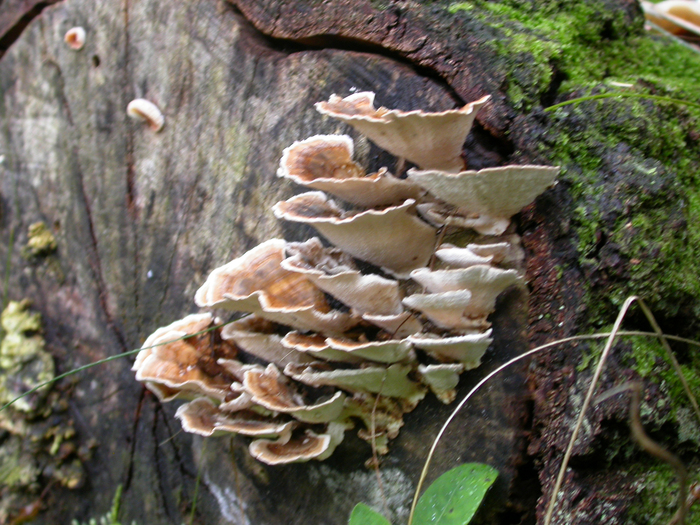
Ooh, I like those kind,
said Elke, spotting this collection of bracket fungi on a dead log. These are of the turkeytail
type, and they are decidedly beautful. This photo is a bit blurry, but I've included it for Elke anyway. We'll get a better photo next time.
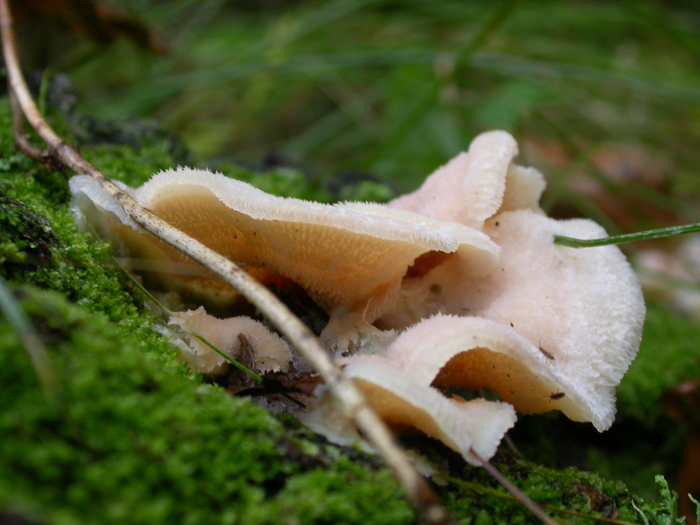
On the same log were these little guys. They might be a younger version of their cousins on the other side of the log, but I don't think so. They were quite soft and pliable for bracket fungi, with a lovely down of fine white hairs over the top. This cluster was about 4cm in diameter in total; each individual mushroom was about 2cm diameter.
In order to see the next set of photos, move the mouse so that the arrow on the screen moves into the blue field that says next page
. The arrow might change into a hand when you do this. Once it's inside the blue field, press the left button on the top of the mouse.
 Next Page
Next Page